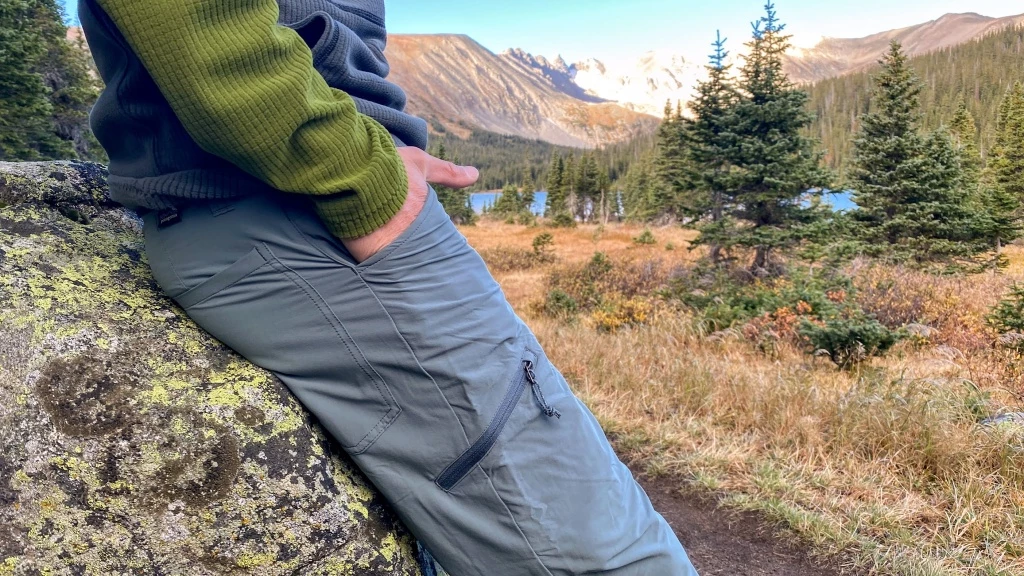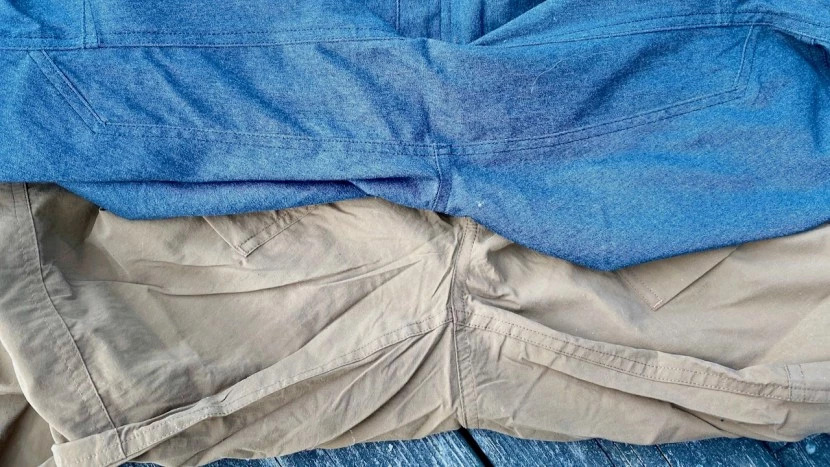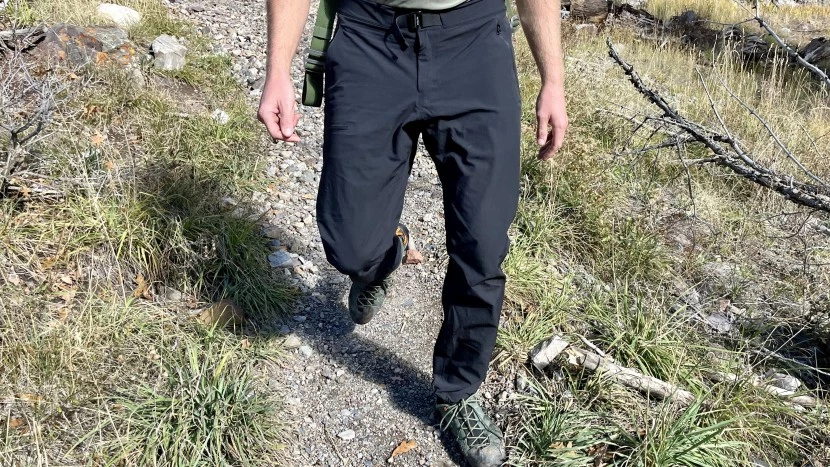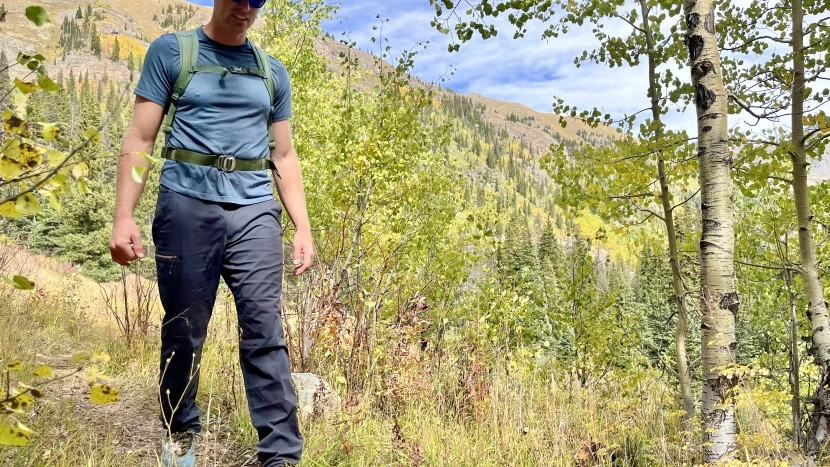Why Choosing the Right Hiking Pants Matters
The difference between a miserable hike and an unforgettable adventure often comes down to the gear you wear. During my recent 15-mile trek through the Rocky Mountain backcountry, I witnessed firsthand how the wrong pants can derail an entire expedition. A fellow hiker wearing cotton jeans struggled with chafing, overheating, and restricted movement, while those of us in proper hiking pants moved comfortably through varied terrain and weather conditions.
Quality hiking pants serve multiple critical functions that regular clothing simply cannot match. They regulate body temperature through advanced fabric technologies, resist abrasion from rocks and vegetation, and provide the mobility needed for scrambling over boulders or navigating steep switchbacks. The best backpacking pants combine durability with comfort, ensuring you can focus on the trail ahead rather than gear malfunctions.

Weather protection is another crucial consideration. Modern hiking pants feature water-resistant coatings, wind-blocking capabilities, and quick-dry materials that keep you comfortable in changing conditions. Whether you need pants for hiking in the rain or lightweight options for desert adventures, the right choice adapts to your environment rather than fighting against it.
Beyond performance, fit and versatility matter tremendously. The best hiking pants transition seamlessly from trail to town, eliminating the need for multiple outfit changes during travel. They accommodate layers underneath for cold weather adventures while remaining comfortable as standalone pieces in warmer conditions. This adaptability makes them essential for any serious outdoor enthusiast's wardrobe.
My Personal Experience Testing Hiking Pants on Real Trails
Testing in Diverse Conditions
Over the past three years, I've put dozens of hiking pants through rigorous real-world testing across diverse environments. From the humid rainforests of Olympic National Park to the arid landscapes of Joshua Tree, each environment revealed different strengths and weaknesses in various designs. My testing protocol includes multi-day backpacking trips, day hikes in extreme temperatures, and scrambling sessions on technical terrain.
One particularly memorable test occurred during a week-long section hike of the Pacific Crest Trail in Washington. I alternated between three different pairs of pants, documenting their performance in rain, snow, intense sun, and overnight temperatures dropping into the 30s. The clear winner was a pair that balanced breathability, weather resistance, and durability without compromising mobility or comfort.
Lessons Learned from Trail Rangers and Fellow Hikers
Conversations with seasoned trail rangers have provided invaluable insights into what truly matters in hiking pants. A ranger at Yosemite shared that the most common complaint from visitors isn't about blisters or heavy packs, but about clothing that fails to perform when conditions change. He emphasized the importance of pants that dry quickly after water crossings and resist tears from granite scrambles.
Local hiking guides consistently recommend prioritizing fit over features. During guided trips, I've observed that hikers wearing properly fitted pants, even budget models, outperform those in premium gear that doesn't fit correctly. The best backpacking pants for men and women's hiking pants often differ in cut and proportions, making gender-specific designs worth considering.
The seasonal factor cannot be overlooked. During winter testing in the Cascade Mountains, I learned that cold weather backpacking pants require completely different considerations than summer alternatives. Layering compatibility, wind resistance, and snow shedding become paramount, while breathability takes a secondary role.
Expert Review: Best Hiking Pants Tested
Top 5 Best Pants to Hike In (2025 Reviews)
1. Outdoor Research Ferrosi Pants
The gold standard for lightweight backpacking pants, these have been my go-to choice for three seasons. The 86% nylon, 14% spandex blend offers exceptional stretch and breathability while maintaining surprising durability. During a challenging scramble up Mount Whitney, these pants provided unrestricted movement and dried quickly after an unexpected afternoon thunderstorm.
Key Features:
- Superior stretch and mobility
- Excellent breathability
- Quick-dry performance
- UPF 50+ sun protection
2. Arc'teryx Gamma Pants
Premium softshell construction makes these ideal for technical terrain and variable weather. The integrated belt system and weather-resistant fabric shine during alpine adventures. While expensive, the build quality justifies the investment for serious hikers who demand the best performance in challenging conditions.
Key Features:
- Integrated belt system
- Excellent weather resistance
- Durable softshell fabric
- Technical climbing performance
3. Women's Quick Dry Hiking Pants
An outstanding value choice that has earned thousands of positive reviews from female hikers. These lightweight pants offer impressive performance for the price, with quick-dry fabric and an elastic waist for all-day comfort. Perfect for casual hikers and those building their first outdoor wardrobe.
Key Features:
- Quick-dry technology
- Comfortable elastic waist
- Multiple cargo pockets
- Excellent value pricing
4. Men's Convertible Hiking Pants
Versatility defines these pants for backpacking adventures where conditions change rapidly. The zip-off legs provide instant adaptability from full pants to shorts, while the water-resistant fabric handles light precipitation. Five deep pockets offer ample storage for trail essentials.
Key Features:
- Convertible pants-to-shorts design
- Water-resistant coating
- Five functional pockets
- Quick-dry material
5. Kuhl Men's Radikl Pants
Kuhl's reputation for quality shines through in these technical hiking pants. The articulated design and stretch panels provide exceptional mobility, while the DWR finish repels light moisture. These represent the premium end of outdoor pants with styling that works both on the trail and around town.
Key Features:
- Articulated design for mobility
- Strategic stretch panels
- DWR water-repellent finish
- Premium construction quality
Essential Features to Look for in Hiking Pants
Fabric Technology
Modern hiking pants utilize advanced fabric blends that would have been impossible just a decade ago. Synthetic materials like nylon and polyester form the foundation, providing durability and quick-dry performance. The addition of elastane or spandex, typically 5-15% of the total blend, introduces stretch capabilities that dramatically improve mobility and comfort during dynamic movements.
Water-resistant treatments, commonly DWR (Durable Water Repellent) coatings, cause water to bead and roll off the fabric surface. While not waterproof, this feature provides crucial protection during light rain or morning dew encounters. For serious weather protection, consider dedicated waterproof backpacking pants as a shell layer.
Fit and Mobility
Articulated knees, gusseted crotches, and strategic stretch panels distinguish hiking pants from regular clothing. These design elements accommodate the high steps, deep lunges, and varied postures common in outdoor activities. During my testing on technical scrambling routes, pants with proper articulation allowed natural movement without binding or restriction.
The rise and inseam measurements become critical for all-day comfort. A higher rise prevents the waistband from digging in when wearing a pack, while proper inseam length eliminates bunching at the ankles. Many brands now offer multiple inseam options to accommodate different body proportions and preferences.

Ventilation and Climate Control
Temperature regulation separates good hiking pants from great ones. Mesh-lined pockets, side zips, and convertible designs provide active ventilation when conditions heat up. Some models feature ultralight backpacking pants construction that prioritizes breathability above all other factors.
Cuff adjustments, whether drawcords, snaps, or elastic, allow fine-tuning of airflow and protection. These simple features become invaluable when transitioning between shaded forest sections and exposed ridgelines, or when wading through morning dew versus dry afternoon conditions.
Durability and Construction
Reinforced stress points, quality zippers, and double-stitched seams indicate pants built for the long haul. Knee and seat reinforcements prevent premature wear from rock contact and pack friction. During extended backpacking trips, these details make the difference between gear that lasts the journey and equipment that fails when you need it most.
Ripstop weave patterns and abrasion-resistant fabrics add durability without significant weight penalties. Premium brands often specify denier ratings and fabric weights, helping informed buyers understand the durability-to-weight tradeoffs inherent in different designs.
User Reviews and Real-World Performance
Sarah M. - Colorado Trail Section Hiker
"After struggling with chafing and overheating in regular athletic pants, I invested in proper hiking pants for my Colorado Trail adventure. The difference was incredible! The stretch fabric moved with me during steep climbs, and the quick-dry material kept me comfortable even when caught in afternoon thunderstorms. These pants transformed my hiking experience from endurance test to pure enjoyment."
Verified Amazon Purchase - Outdoor Research Ferrosi Pants
Mike R. - Weekend Warrior from Reddit r/hiking
"I was skeptical about spending $100+ on hiking pants until my buddy let me try his pair during a challenging scramble in the Adirondacks. The mobility and comfort were game-changing. I immediately ordered my own pair and haven't looked back. They've held up through dozens of hikes, including some serious bushwhacking that destroyed my old pants. Worth every penny for serious hikers."
Reddit Review - Arc'teryx Gamma Pants
Jennifer L. - Quora Outdoor Enthusiast
"As someone who hikes in all seasons, I need pants that can handle everything from summer heat to spring snow. My convertible hiking pants have been perfect for this versatility. The zip-off legs let me adapt quickly to changing conditions, and the multiple pockets keep my essentials organized. They've been my go-to choice for three years of regular hiking, from desert canyons to alpine lakes."
Quora Answer - Convertible Hiking Pants Review
Pros and Cons Analysis
Universal Pros
- Superior mobility compared to regular pants
- Quick-dry performance in wet conditions
- Durability against abrasion and wear
- Temperature regulation in varying conditions
- Professional appearance for trail-to-town use
Common Concerns
- Higher initial cost than regular clothing
- Sizing variations between brands
- DWR treatments require periodic renewal
- Some models run warm in hot weather
- Stretch fabrics may bag out over time
Frequently Asked Questions
What makes hiking pants different from regular pants?
Hiking pants are specifically engineered for outdoor activities with technical fabrics that wick moisture, dry quickly, and resist abrasion. They feature articulated knees, gusseted crotches, and stretch panels for enhanced mobility during dynamic movements. The materials typically include synthetic blends with UV protection, water-resistant treatments, and reinforced stress points. Unlike regular pants, they're designed to perform in variable weather conditions while maintaining comfort during extended periods of physical activity. Many also include specialized pocket configurations for outdoor gear storage and ventilation features for temperature regulation.
Should I choose convertible pants or dedicated hiking pants?
The choice depends on your hiking style and climate preferences. Convertible pants excel in variable conditions where you might encounter both cold mornings and warm afternoons, making them ideal for shoulder seasons and diverse terrain. However, dedicated hiking pants typically offer better fit, comfort, and performance since they're optimized for a single configuration. If you frequently hike in stable conditions or prefer the best possible performance, dedicated pants are superior. For maximum versatility and travel efficiency, convertibles make sense despite minor compromises in fit and weight.
How important is the fabric blend in hiking pants?
Fabric composition directly impacts performance, durability, and comfort. Nylon provides strength and abrasion resistance, while polyester offers quick-dry properties and wrinkle resistance. Spandex or elastane content (typically 5-15%) determines stretch and recovery characteristics. Higher spandex percentages increase mobility but may reduce durability over time. Cotton blends offer comfort but sacrifice quick-dry performance and add weight when wet. For most hikers, synthetic blends with 10-15% stretch content provide the best balance of performance, durability, and comfort across varying conditions.
What's the difference between water-resistant and waterproof hiking pants?
Water-resistant pants feature DWR (Durable Water Repellent) coatings that cause water to bead and roll off the surface, providing protection against light rain, dew, and brief showers. They remain breathable but will eventually wet through in sustained precipitation. Waterproof pants use membrane technologies like Gore-Tex to block water penetration completely, making them suitable for heavy rain and extended wet conditions. However, waterproof pants sacrifice breathability and often feel clammy during high-output activities. Most hikers find water-resistant pants sufficient for typical trail conditions, reserving waterproof options for specific weather protection needs.
How should hiking pants fit for optimal performance?
Proper fit balances mobility, comfort, and layering capability. The waist should sit comfortably without requiring a tight belt, allowing for pack hipbelt placement. Thighs need enough room for high steps and deep lunges without binding, while the seat should accommodate the sitting position without pulling. Inseam length should allow full leg extension without bunching at the ankles. Consider sizing up slightly if you plan to layer underneath or prefer a relaxed fit. Remember that stretch fabrics will conform to your body over time, so avoid overly tight fits that may restrict circulation during long hikes.
Are expensive hiking pants worth the investment?
Premium hiking pants justify their cost through superior materials, advanced features, and exceptional durability for frequent users. If you hike regularly, tackle challenging terrain, or encounter variable weather, high-end pants provide meaningful performance advantages and long-term value. However, casual hikers may find excellent value in mid-range options that offer 80% of premium performance at half the cost. The key is matching the investment to your activity level and performance needs. Consider your hiking frequency, typical conditions, and gear budget when deciding between budget, mid-range, and premium options.
Conclusion
Choosing the best pants to hike in transforms your outdoor experience from endurance test to pure adventure. Through extensive testing across diverse terrains and conditions, I've learned that the right hiking pants become an extension of your body, providing protection, comfort, and mobility without conscious thought. Whether you're a weekend warrior exploring local trails or a dedicated backpacker tackling long-distance routes, investing in quality hiking pants pays dividends in comfort and performance.
My Top Recommendations by Use Case
For Most Hikers:
Outdoor Research Ferrosi Pants offer the best balance of performance, durability, and value.
For Technical Adventures:
Arc'teryx Gamma Pants provide premium performance for demanding conditions.
For Budget-Conscious Hikers:
Women's Quick Dry Hiking Pants deliver excellent value for casual adventures.
For Variable Conditions:
Convertible pants adapt to changing weather and terrain throughout the day.

Remember that the best hiking pants are the ones you'll actually wear consistently. Consider your typical hiking conditions, activity level, and personal preferences when making your selection. Don't be afraid to try different brands and styles to find your perfect match – the investment in comfort and performance will enhance every trail adventure. For specialized needs like cold weather hiking or ultralight backpacking, explore our detailed guides for specific recommendations.
The trail is calling, and with the right pants, you'll be ready to answer that call in comfort and confidence. Happy hiking!



